Les énergies renouvelables sont aujourd'hui la source d'énergie qui connaît la croissance la plus rapide, leur volume mondial augmentant en moyenne de 1,5 milliard d'euros.
40 pour cent par an. L'énergie éolienne et l'énergie solaire sont des exemples de combustibles alternatifs qui alimentent un nombre croissant d'initiatives écologiques dans le monde entier. En particulier, l'énergie solaire est un exemple de l'une des sources d'énergie renouvelable les plus importantes qui stimulent l'innovation. La pollution et le changement climatique étant des préoccupations majeures, l'énergie solaire est devenue l'une des principales sources d'énergie propre et renouvelable.
Non seulement l'énergie solaire permet de réduire les coûts énergétiques, mais elle contribue également à réduire notre dépendance à l'égard des combustibles fossiles. Les progrès de la technologie de l'internet des objets ont fait de l'énergie solaire une solution propre pour un large éventail d'applications. Parmi les exemples d'énergie solaire et de IoT , on peut citer les stations de recharge de véhicules électriques alimentées par l'énergie solaire, les capteurs intelligents alimentés par l'énergie solaire dans les dispositifs de production et de distribution, et les véhicules solaires.
Dans cet article de blog, nous explorons comment la technologie de l'énergie solaire et IoT s'associent pour créer un duo dynamique dans le domaine de l'énergie renouvelable, en utilisant certaines des histoires de clients de Digi pour démontrer les façons innovantes dont l'énergie solaire est utilisée aujourd'hui. Vous trouverez d'autres exemples d'applications, par secteur d'activité, dans la section Customer Stories du site Digi.

IoT dans Solar Tracking
Suntrack® de P4Q est un exemple de gestion de l'énergie solaire. En tant que leader dans le domaine des contrôleurs de trackers solaires photovoltaïques, P4Q a permis à ses clients de surveiller à distance et en temps réel les champs de panneaux solaires dans le monde entier. Grâce à des algorithmes capables de déterminer avec précision la position du soleil en fonction de la date et de l'heure et de prendre en compte les prévisions météorologiques, Suntrack communique avec une unité de commande de suiveur située sous le panneau afin de réajuster soigneusement le panneau solaire dans sa position optimale.
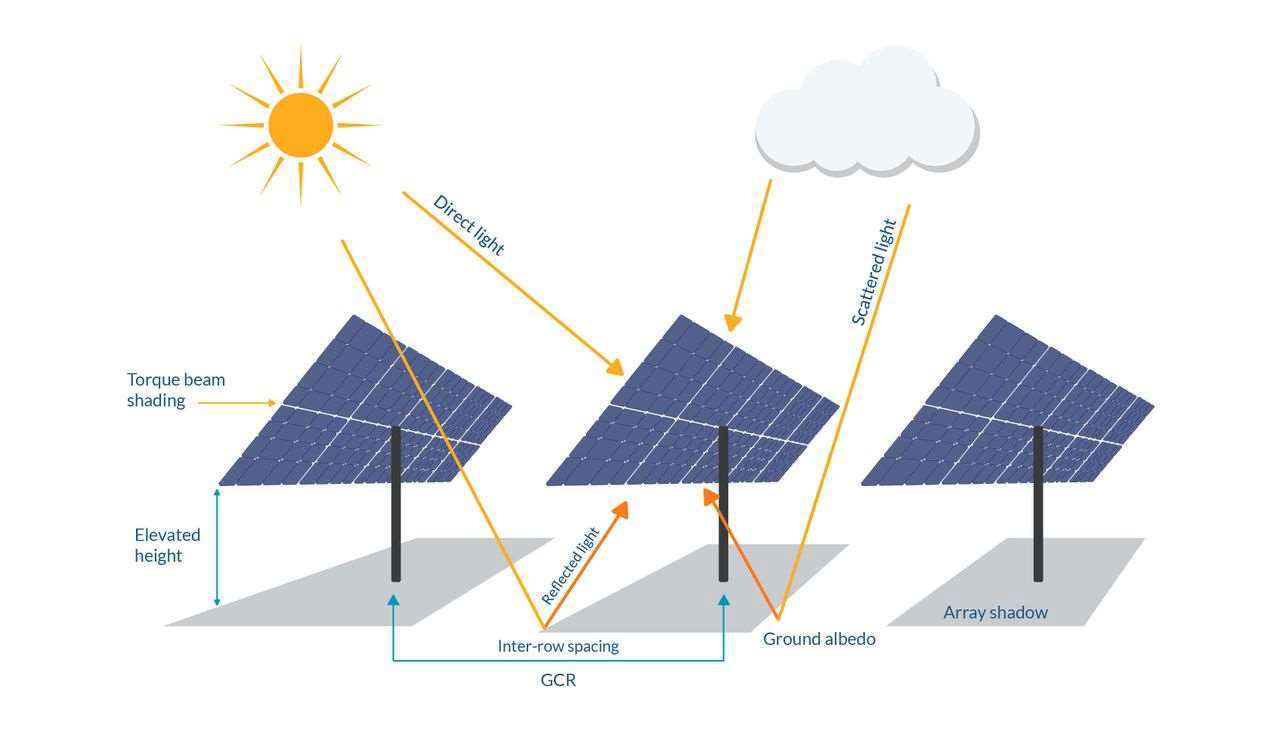
Ce système est associé à un module Digi XBee® 3 Zigbee 3.0 qui ajoute de la connectivité dans une empreinte compacte, à faible consommation et à profil bas. S'appuyant sur une technologie de pointe, le module pré-certifié Digi XBee 3 offre la possibilité de passer d'une fréquence à l'autre et d'un protocole sans fil à l'autre en fonction des besoins. Cela a permis à l'entreprise verte de surveiller de près plus de 1 150 sites solaires photovoltaïques dans le monde.
Vous pouvez lire l'article complet de P4Q ici.
IoT dans les véhicules solaires
Qu'il s'agisse de ramener vos enfants de l'école ou de vous rendre à votre chalet dans le nord, les véhicules sont une nécessité de tous les jours. Mais notre dépendance à l'égard des véhicules à essence est l'un des plus grands défis pour l'environnement. Un seul gallon d'essence dans une voiture produit environ 19 livres de dioxyde de carbone. Selon une étude menée par le National Geographic, les voitures produisent environ un tiers de toute la pollution de l'air aux États-Unis. "Le smog, le monoxyde de carbone et les autres toxines émises par les véhicules sont particulièrement inquiétants parce qu'ils laissent des pots d'échappement au niveau de la rue, où les humains respirent l'air pollué directement dans leurs poumons".
Que nous réserve l'avenir en matière de sources d'énergie alternatives pour les véhicules ? Nous savons tous que les véhicules électriques sont de plus en plus populaires. Mais saviez-vous que les véhicules fonctionnant à l'énergie solaire pourraient également être une solution ?
Aujourd'hui, des groupes d'étudiants du monde entier s'initient à l'ingénierie, à la conception électronique, aux communications sans fil et à bien d'autres choses encore en concevant les véhicules solaires de demain. Jetons un coup d'œil à certains de ces projets, qui offrent d'excellents exemples d'utilisation de l'énergie solaire et du site IoT .
Projet de véhicule solaire de l'Université du Minnesota
Le projet de véhicule solaire de l'université du Minnesota, géré par des étudiants, vise à affiner la conception des voitures et à repenser la façon dont les gens peuvent se déplacer de manière efficace, confortable et pratique en utilisant uniquement l'énergie dérivée des panneaux solaires embarqués. Intégrant plusieurs disciplines, du génie mécanique au génie électrique en passant par les communications sans fil, ces véhicules innovants montrent comment nous pourrons un jour éliminer l'importante empreinte carbone des véhicules à essence.
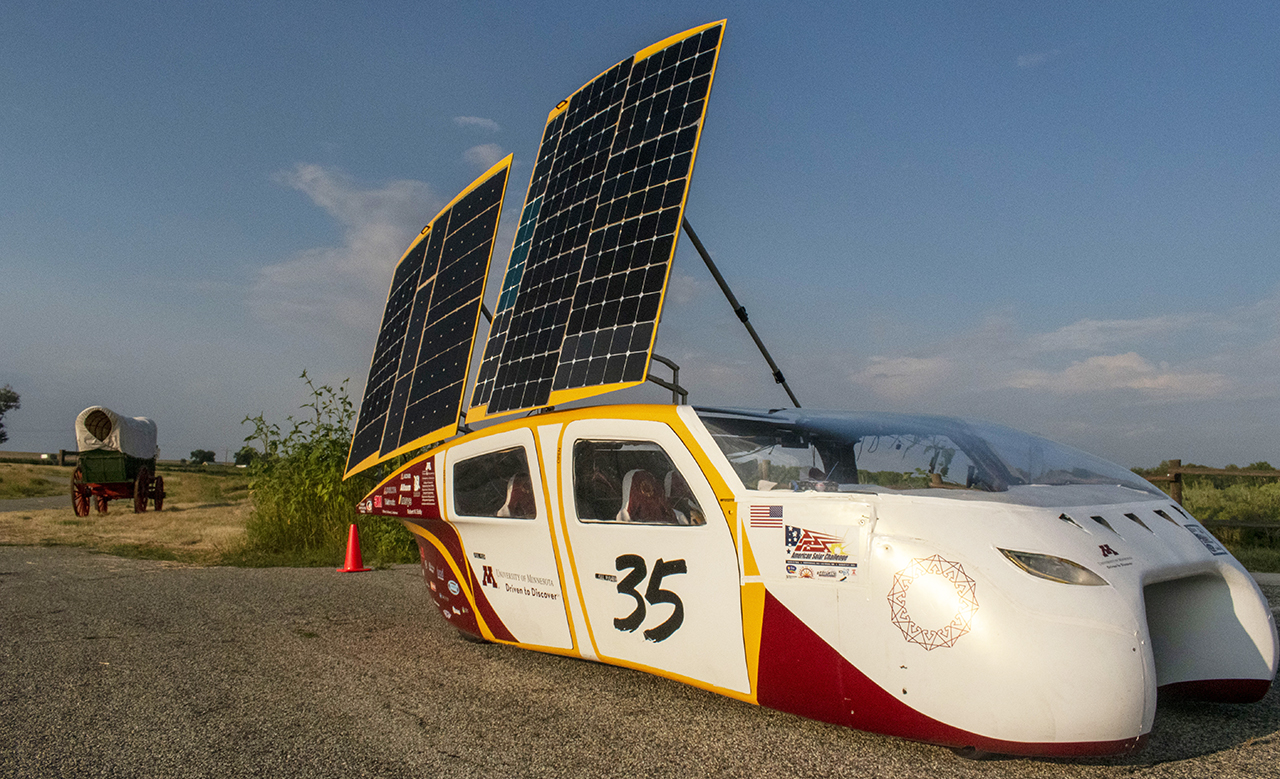
L'équipe met en œuvre son ingénierie innovante pour faire des automobiles à énergie solaire une réalité pragmatique. Les modems XBee® 900 MHz aident l'équipe à suivre les données essentielles pendant les essais et les compétitions. Au cours de plusieurs décennies, l'UMNSVP s'est forgé un solide palmarès. Dans l'histoire de l'équipe :
- Aucune voiture n'a jamais manqué de se qualifier ou de terminer une course.
- Ils ont participé à des courses dans cinq pays différents, avec des résultats passionnants :
Vous pouvez lire l'article complet sur le Minnesota Solar Vehicle ici.
L'équipe Illini Solar Car
L'équipe Illini Solar Car est un autre bel exemple de l'énergie solaire à l'œuvre. Concurrente de l'université du Minnesota, l'équipe a conçu, construit et fait courir des voitures solaires uniques qui aident le monde à envisager un avenir sans empreinte carbone pour le transport personnel.
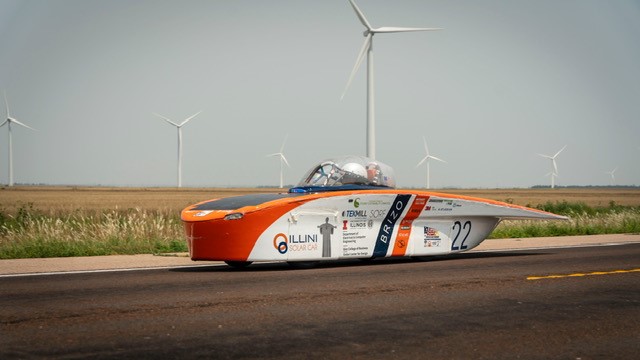
Les courses auxquelles participent ces voitures à énergie solaire sont longues, puisqu'elles parcourent environ 1 500 miles sur plusieurs jours. Il est donc essentiel de surveiller tous les systèmes. Il s'agit notamment du moteur du véhicule, de la consommation de la batterie, des capteurs de température et de l'électronique. Si ces systèmes dépassent leurs zones de sécurité, ils peuvent subir un emballement thermique qui détruit la batterie. Le modem RF Digi XBee® PRO aide les membres de l'équipe à surveiller attentivement leur véhicule afin d'optimiser la vitesse, la distance et les performances.
Vous pouvez lire l'article complet sur la voiture solaire Illini ici.
Projet de bateau solaire AGH
L'énergie solaire pour les véhicules ne se limite pas aux voitures, comme le démontre l'équipe du bateau solaire AGH. Dirigé par une équipe d'étudiants de l'université des sciences et technologies AGH de Cracovie, le projet vise à construire des bateaux électriques sans émissions qui utilisent 100 % d'énergie solaire renouvelable.

Pour ce projet, l'équipe a utilisé deux variantes du module RF Digi XBee® SX 868, toutes deux dotées d'une longue portée et de taux de transfert de données élevés. Digi XBee Les modules SX 868 fonctionnent dans la gamme des 863-870 MHz, ce qui leur confère d'excellentes performances et une bonne immunité aux interférences. Ces modules flexibles intègrent le protocole DigiMesh®, mais peuvent également utiliser le protocole point à multipoint.
Si la vision de l'équipe d'AGH Solar Boat se réalise, les bateaux autonomes et sans émissions qui réduisent considérablement la pollution pourraient devenir l'avenir du transport maritime et fluvial. Grâce à des capteurs et à des systèmes de contrôle avancés, les bateaux sont totalement autonomes. Grâce à des panneaux photovoltaïques et à des batteries lithium-ion, ils n'ont pas besoin de faire escale pour se ravitailler en carburant. Tout cela fait du bateau autonome un bateau écologique à l'autonomie illimitée.
Vous pouvez lire l'histoire complète du bateau solaire AGH ici.
Exemple d'utilisation de l'énergie solaire dans la gestion de la végétation
Même par temps ensoleillé, les panneaux solaires photovoltaïques ne peuvent pas produire d'électricité respectueuse de l'environnement s'ils sont masqués par des herbes, des mauvaises herbes et d'autres végétaux sauvages. La société Renu Robotics, basée à San Antonio, révolutionne la manière dont les installations d'énergie solaire gèrent la végétation. Grâce à un robot de tonte électrique sophistiqué et autonome, l'entreprise aide les centrales solaires à grande échelle à empêcher les mauvaises herbes, les graminées et d'autres végétaux de pousser et d'obscurcir les panneaux solaires.
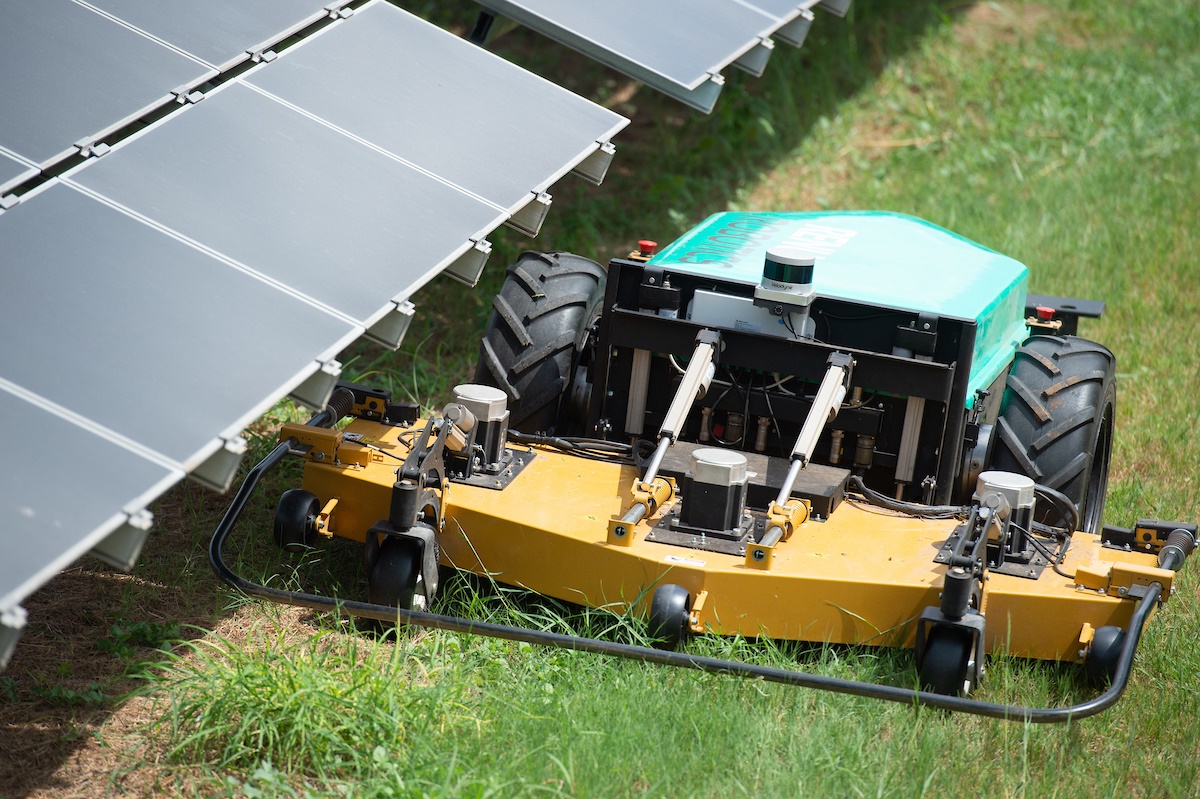
Le "Renubot" est une tondeuse/tracteur qui utilise l'intelligence artificielle, des batteries puissantes, des communications sans fil et la gestion à distance pour tondre entre les rangées de capteurs photovoltaïques, en maintenant la végétation à des longueurs acceptables. Renubot est assemblé avec des communications sans fil intégrées provenant du Digi XBee® PRO 900HP - un module intégré qui fournit la meilleure connectivité sans fil de sa catégorie aux appareils. Grâce aux capacités de maillage, à la facilité d'intégration et à la gamme de fréquences prises en charge par le Digi XBee 900HP PRO, Renubot peut s'étendre sur des centaines d'hectares.
Vous pouvez lire l'histoire complète de Renu Robotics ici.
Exemples de gestion de l'énergie solaire dans des applications résidentielles
Hawaï étant l'un des États américains les plus dépendants des combustibles fossiles, un changement s'impose. Un avenir plus radieux exige de s'appuyer uniquement sur des combustibles renouvelables et alternatifs tels que l'énergie solaire et éolienne, mais comment cela est-il possible ? Afin de collecter et de distribuer l'énergie solaire plus efficacement, E-GEAR a développé son contrôleur de gestion énergétique innovant avec l'aide de Digi Wireless Design Services. Avec l'aide de projets tels que cet exemple d'énergie solaire et IoT, nous pouvons contribuer à la réalisation de l'initiative d'énergie propre d'Hawaï, qui vise à faire passer le 50e État à 100 % d'énergie propre d'ici à 2045.
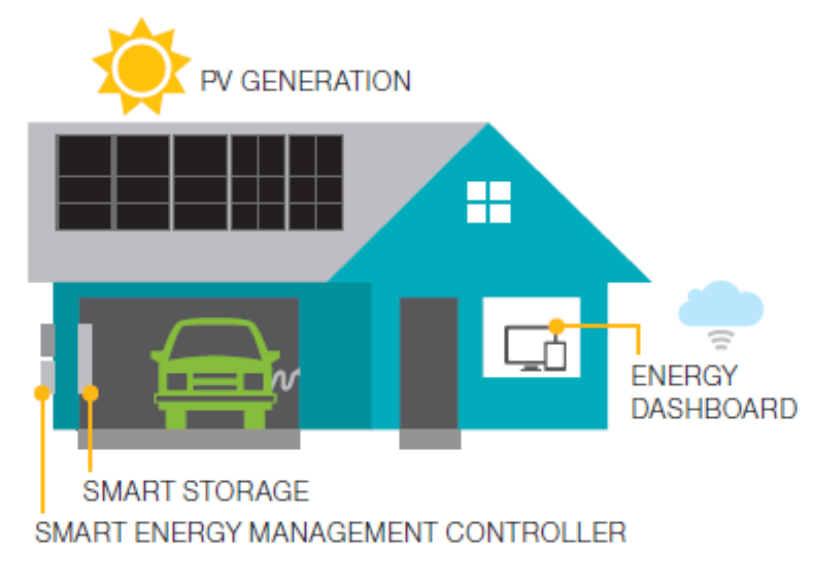
Le contrôleur de gestion de l'énergie (EMC) comprend un logiciel propriétaire qui calcule le flux d'énergie et compense les fluctuations en temps réel de la production solaire et de la consommation domestique, afin de capturer l'énergie excédentaire ou de fournir suffisamment d'énergie au réseau pour atténuer les variations de la production/consommation. L'EMC comprend également une connectivité au cloud et un tableau de bord qui permet au propriétaire et à la compagnie d'électricité de consulter les données en temps réel, de contrôler le système à distance et de prendre les mesures qui s'imposent.
Vous pouvez lire l'article complet d'E-GEAR ici.
Développer les possibilités de l'énergie solaire dans le tiers-monde
En Afrique subsaharienne, environ 500 millions de personnes vivent sans accès à l'électricité. L'installation d'un réseau électrique dans des zones reculées et non développées pose de nombreux problèmes. Devergy est une entreprise sociale qui s'est engagée à fournir une source d'énergie abordable et fiable aux personnes à faible revenu dans les pays en développement, un bel exemple d'énergie solaire qui rend service. Fondé en 2010, le service est basé sur des micro-réseaux d'énergie de la taille d'un village qui fournissent de l'énergie solaire aux ménages et aux entreprises pour l'utilisation de produits de tous les jours comme les lumières et les appareils tels que les réfrigérateurs, les téléviseurs et les radios.
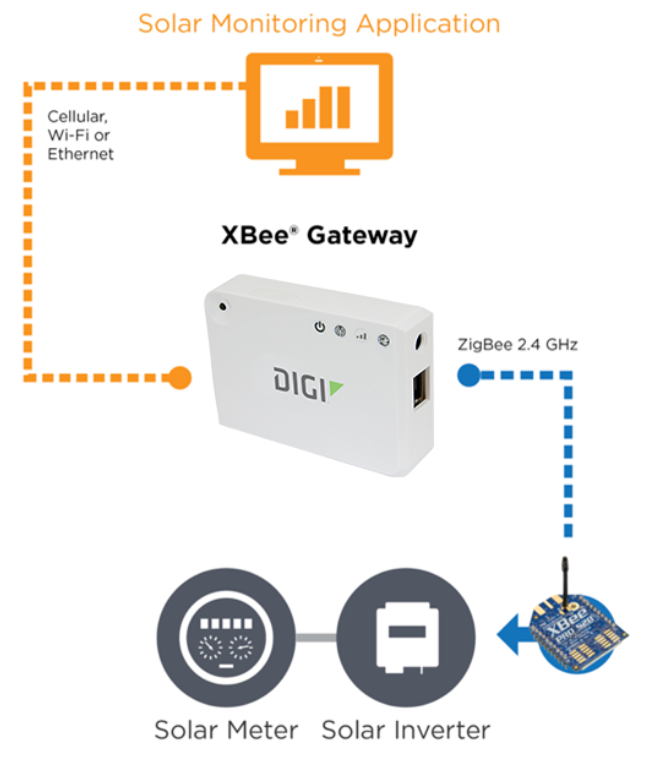
Devergy utilise la technologie Digi XBee® pour le réseau de communication de ses réseaux. Des centaines de nœuds sont connectés avec XBee, ce qui rend les micro-réseaux solaires intelligents, rentables et gérables. Ils s'appuient également sur les passerelles Digi pour les capacités Zigbee à GPRS, ce qui permet à Devergy de fournir ses services au marché plus rapidement. Avec l'aide des produits Digi, Devergy a fourni une source d'énergie propre, renouvelable et fiable, qui est également beaucoup plus abordable.
Vous pouvez lire l'histoire complète de Devergy ici.
IoT Les applications de l'énergie solaire sont vastes et en pleine expansion. Ces exemples de cas d'utilisation donnent un aperçu de la gamme de projets solaires développés par des innovateurs dans un grand nombre d'industries.
Prochaines étapes